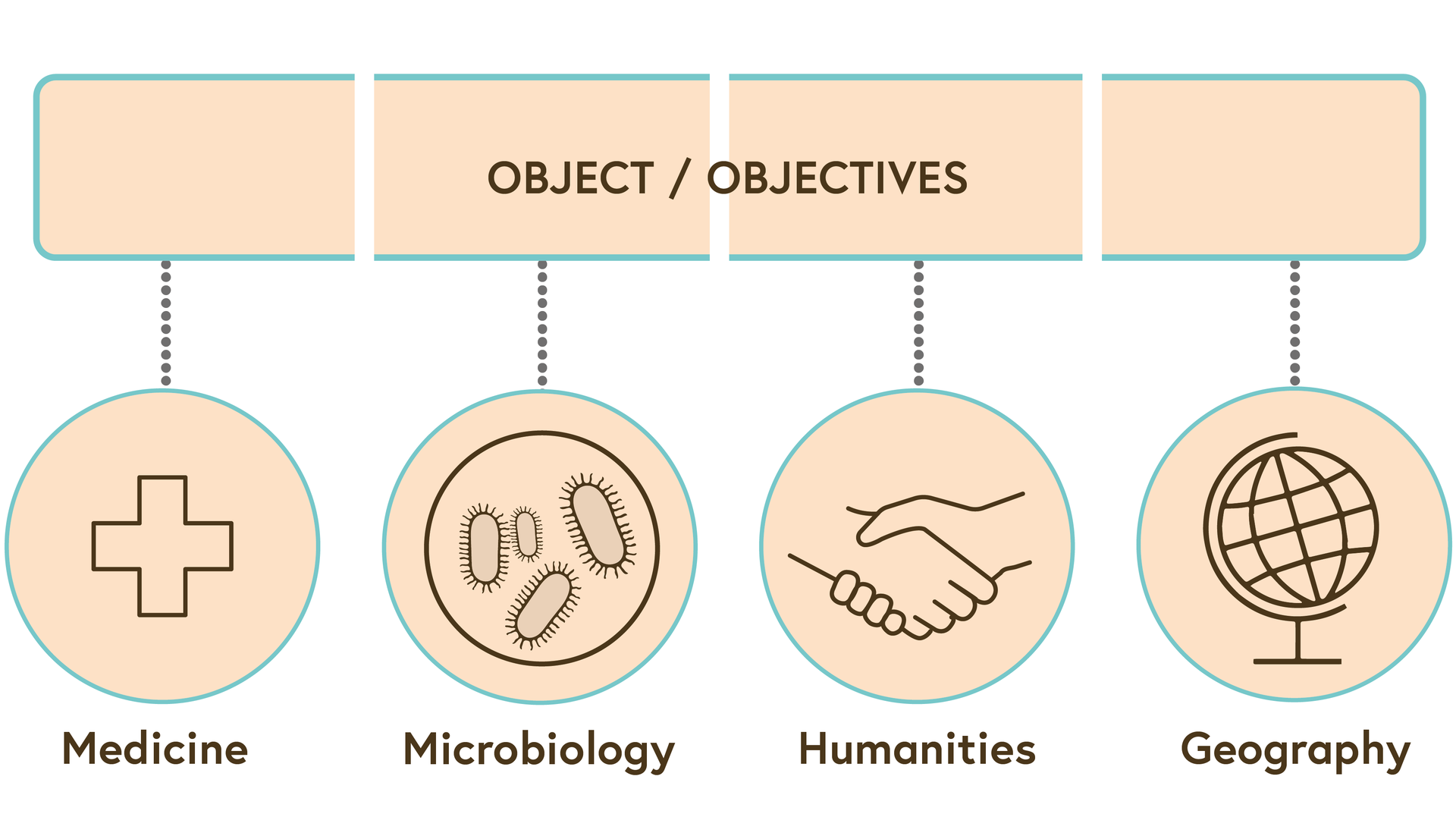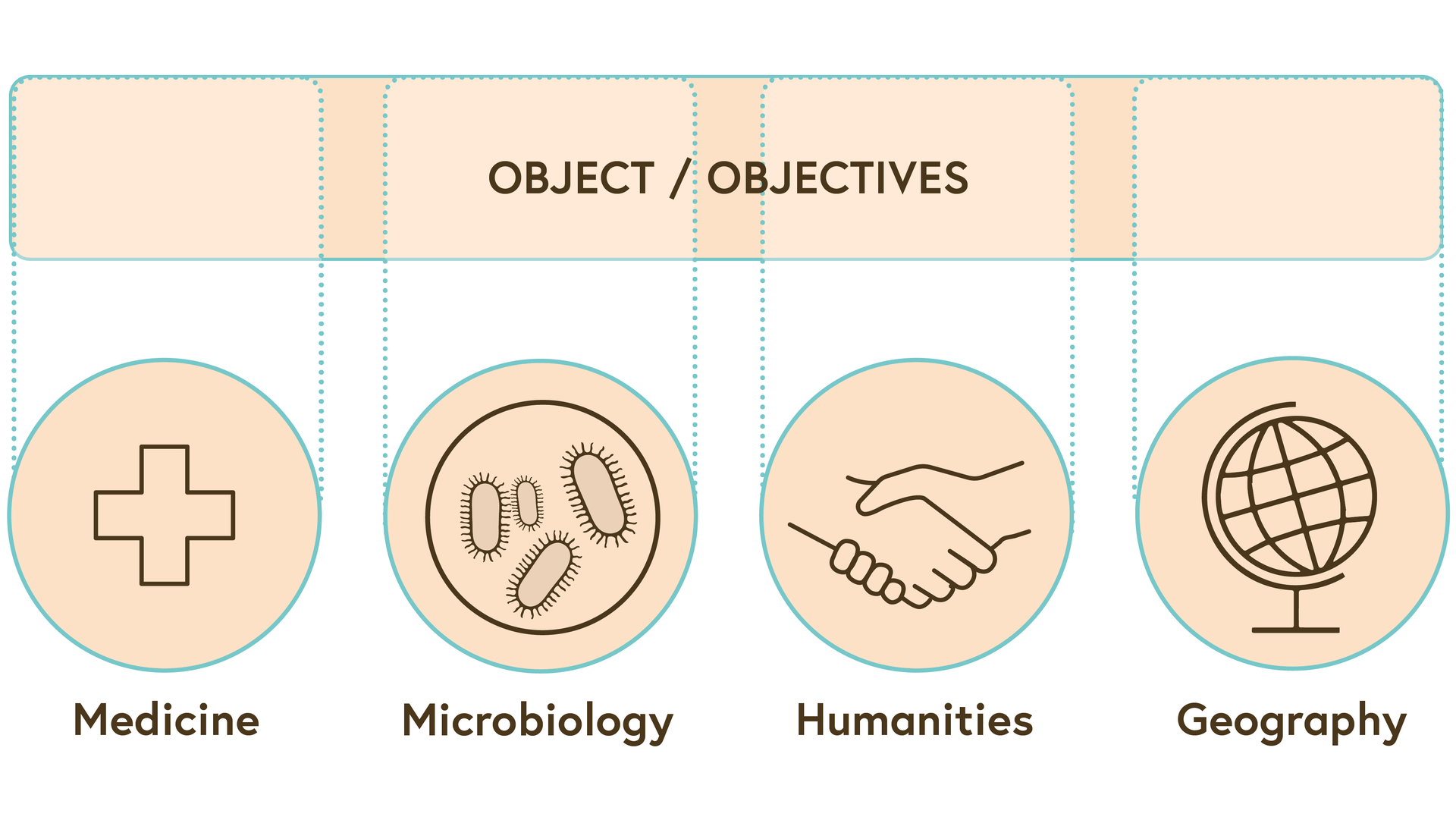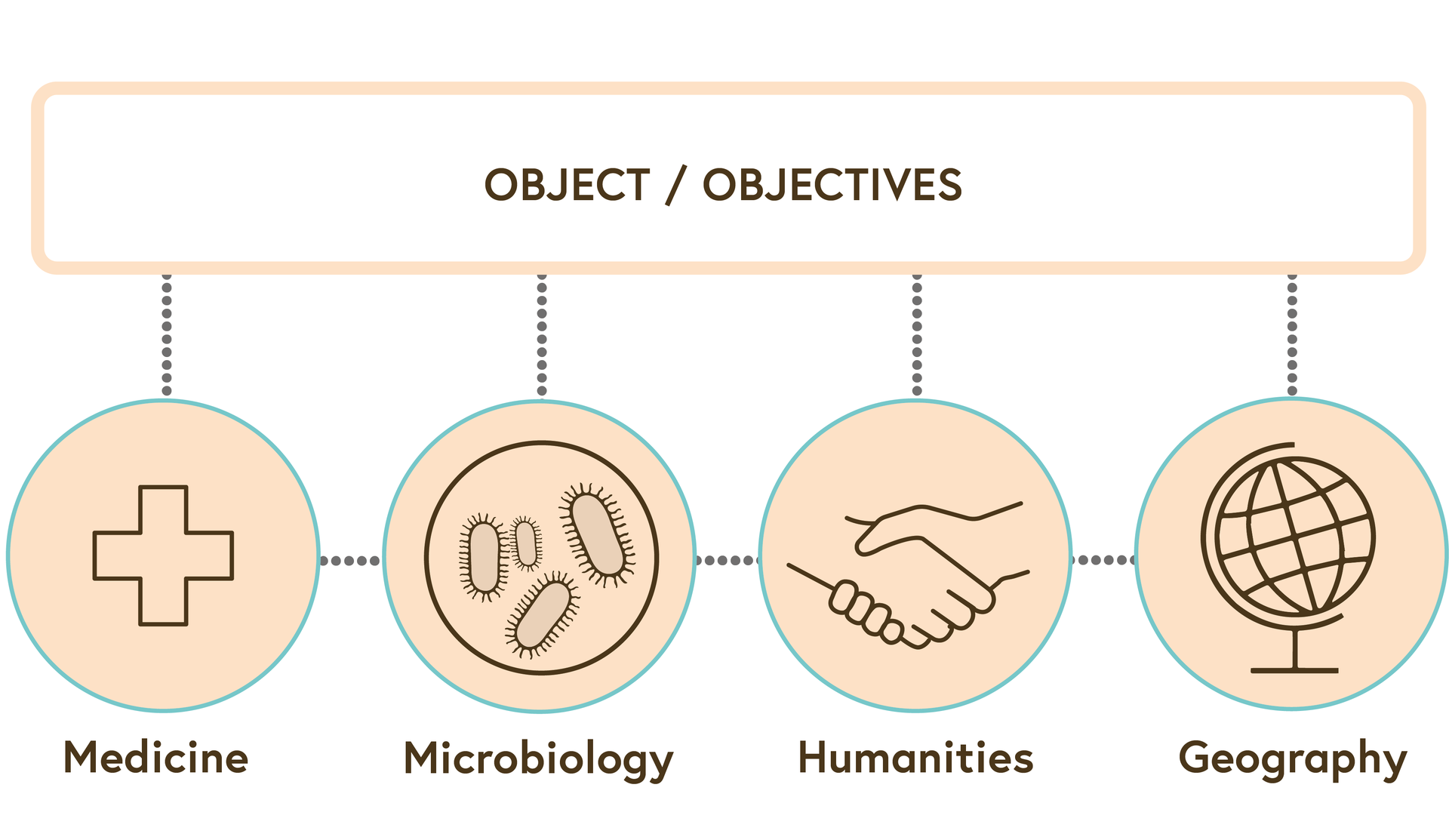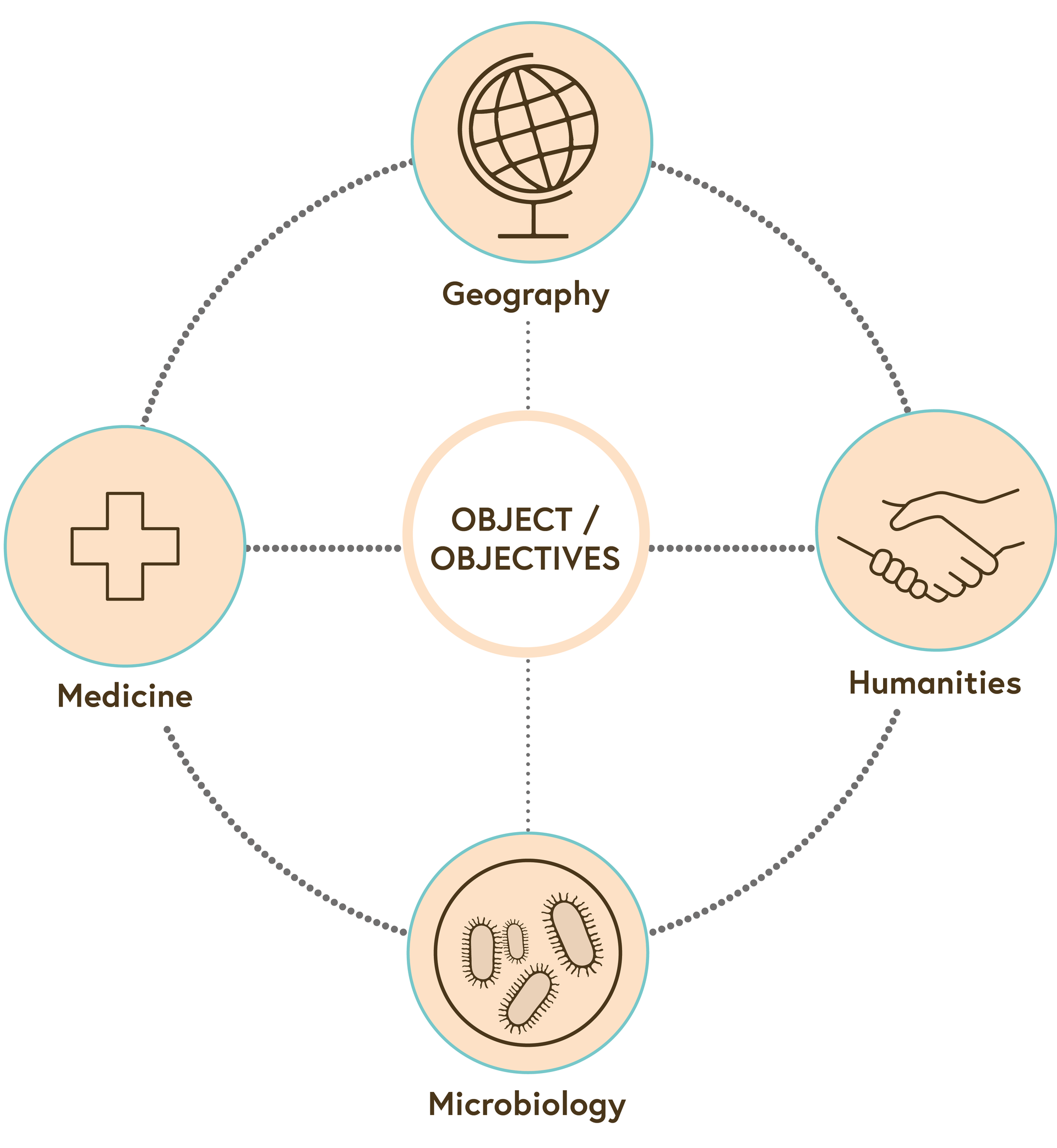ONE HEALTH QUALITATIVE AND MIXED METHODS
4.10
From disciplinary to transdisciplinary approaches
Let’s briefly get an overview in the jungle of terms: From disciplinary to transdisciplinary research.
We are speaking of disciplinary research, when each discipline uses its set of tools (methodological approaches) to address its object or objective and no exchange exists between disciplines. The disciplines set the starting points – and also predetermine the outcomes of the research.

Graph one: disciplinarity
© adapted from Darbellay 2008
We call it multidisciplinary research when different disciplines address a shared objective and want to link research results, without, however, a coordinated and integration-oriented collaboration between researchers from different disciplines. In other words: each discipline works in a self-contained manner with little cross-fertilisation or synergy in the outcomes.

Graph two: multidisciplinarity
© adapted from Darbellay 2008
In interdisciplinary research, there is an integrative collaboration of researchers from different disciplines addressing the same object or objective. Concepts or methodologies are explicitly exchanged and integrated, resulting in a mutual enrichment. It is encouraging to see that funding agencies ask for interdisciplinary research, and recently it has become easier than it was in the past to publish interdisciplinary projects. However, defining joint, and sometimes new, approaches requires more time than disciplinary programmes. Hopefully this will also soon be increasingly considered.

Graph three: interdisciplinarity
© adapted from Darbellay 2008
In transdisciplinary research, the object becomes a partner and there is mutual learning between academia and ‘real world actors’. Transdisciplinary research addresses real-world problems that are characterised by scientific uncertainty, a relatively high level of conflicts of interest and values, and institutional barriers. At the early stage of a programme, uncertainty of knowledge raises several questions such as:
-
Which parameters are relevant?
-
How are they connected in processes?
-
Which disciplines need to be involved?

Graph four: transdisciplinarity
© adapted from Darbellay 2008
You should bear in mind that both inter- and transdisciplinary approaches are done between several disciplines, but transdisciplinary processes consider all knowledge to problem solving, thus also knowledge beyond academic disciplinary knowledge.
Watch the video in the following step to learn more about engaging different stakeholders and transdisciplinary processes.
References
Darbellay, F. (2008). Le défi de l’inter- et transdisciplinarité. Concepts, méthodes et pratiques innovantes dans l’enseignement et la recherche, Lausanne, Presses polytechniques et universitaires romandes.
Hirsch Hadorn, G. et al. (2008). The Emergence of Transdisciplinarity as a Form of Research, in: Hirsch Hadorn, G. et al. (Eds.). Handbook of Transdisciplinary Research. Heidelberg, Springer, 19-39.
License
University of Basel
Downloads
